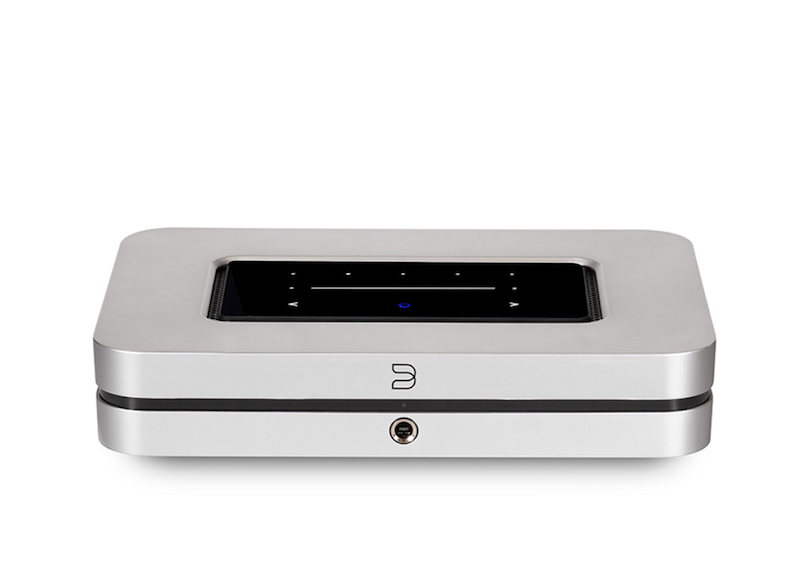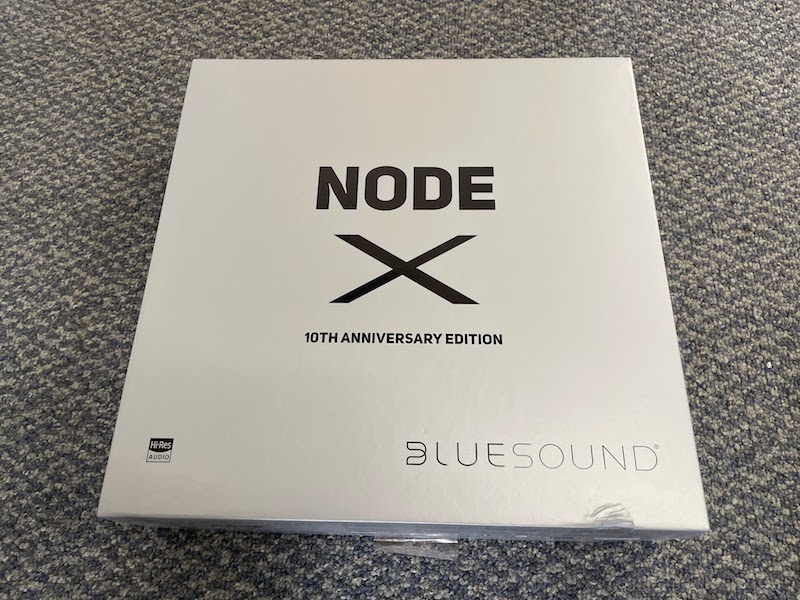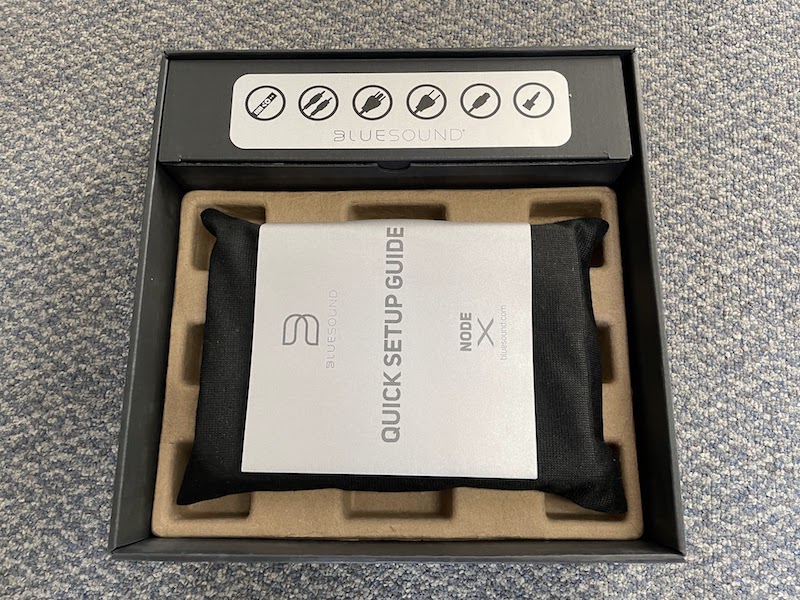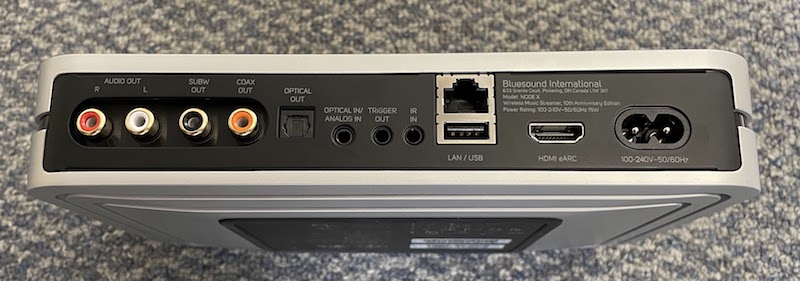
For those looking to add a little oomph to their old stereo rigs without having to get rid of otherwise perfectly good gear, Bluesound created its latest music streamer, the Node X, to mark 10 years of its multiroom high resolution audio streaming platform. The little box packs a punch, with an ESS Sabre HiFi DAC and all the internet music you can shake a stick at.
I just happened to have a perfect tube amplifier driven, 2-channel setup for the Bluesound Node X demo. Would it be any good or just another piece of space junk? I was about to find out.

Unboxing the Bluesound Node X
The Node X ships in a sexy commemorative looking box reminiscent of the schwag seen gracing the celebrity comp rooms at posh film festivals. It’s showy and loud and maybe that’s the point. I lifted up the top of the box with a satisfying friction fit and there underneath another layer of cardboard cocoon sat the Node X wrapped in a black cloth bag. Above it sat an accessory box with power and AV cords while below sat a thin remote control.

Installing the Bluesound Node X
I laid everything out on the floor and set about installing the streamer into my existing system, occupying the “Line 3” input on our Cary Audio tube amplifier. After dressing all the cabling nicely, I plugged the power cord in and prayed I wouldn’t have to connect this thing to hardwired Ethernet before setting it up (thankfully I didn’t).

Configuring the Bluesound Node X
The included quick start guide prompted me to open the BluOS app on my phone and choose “Add Player.” I already had a few other Bluesound devices installed, so this was fairly intuitive. Sure enough, I found the “Add Player” feature and it had already detected the Node X. A few more taps and I was on the network without having to fumble for any passwords.
Another screen or two and everything had been firmware updated. The whole set up process took less than 5 minutes and went off without a hitch. A nice tweak would be to push a “Found New Player” card to the front of the app upon launch rather than making the user hunt around (Sonos does this).
Next came my favorite part. I plopped down on the couch and started hunting for TIDAL MQA high resolution audio content. I soon had Mark Knopfler’s “Sailing to Philadelphia” wafting through the room. I saw immediately that the BluOS app had defaulted the output level as “variable,” so I fixed it since we control volume at the tube amplifier. These were easy tweaks.
The sound through the Klipsch Heritage speakers was amazing. I kept going, moving through “Road to Joy” by Peter Gabriel, Handel’s “Arrival of the Queen of Sheba,” and “Fire Squad” by J. Cole. All of the music sounded amazing and is true testament to the engineering Bluesound has put into this little Swiss Army knife of audio streamers.
Final Report
The Bluesound Node X retails for $749. There are plenty of audio streamers that cost a lot less. Then again, you can buy some “Two Buck Chuck” and it’s about the same as a good bottle of Caymus, right? When you look at its closest legacy system add-on competitor, Sonos Port, you see it right away. It’s all about the DAC and access to truly lossless audio. For some, that doesn’t matter, but since you’re reading this review, my guess is you might be part of the other “some” who don’t mind shelling out for amazing quality. The Bluesound Node X is a killer piece of gear, and I highly recommend you add it to your setup!
This article was originally published by Henry Clifford on Res Tech Today










 CALL US 804.616.4156
CALL US 804.616.4156 BOOK APPOINTMENT
BOOK APPOINTMENT